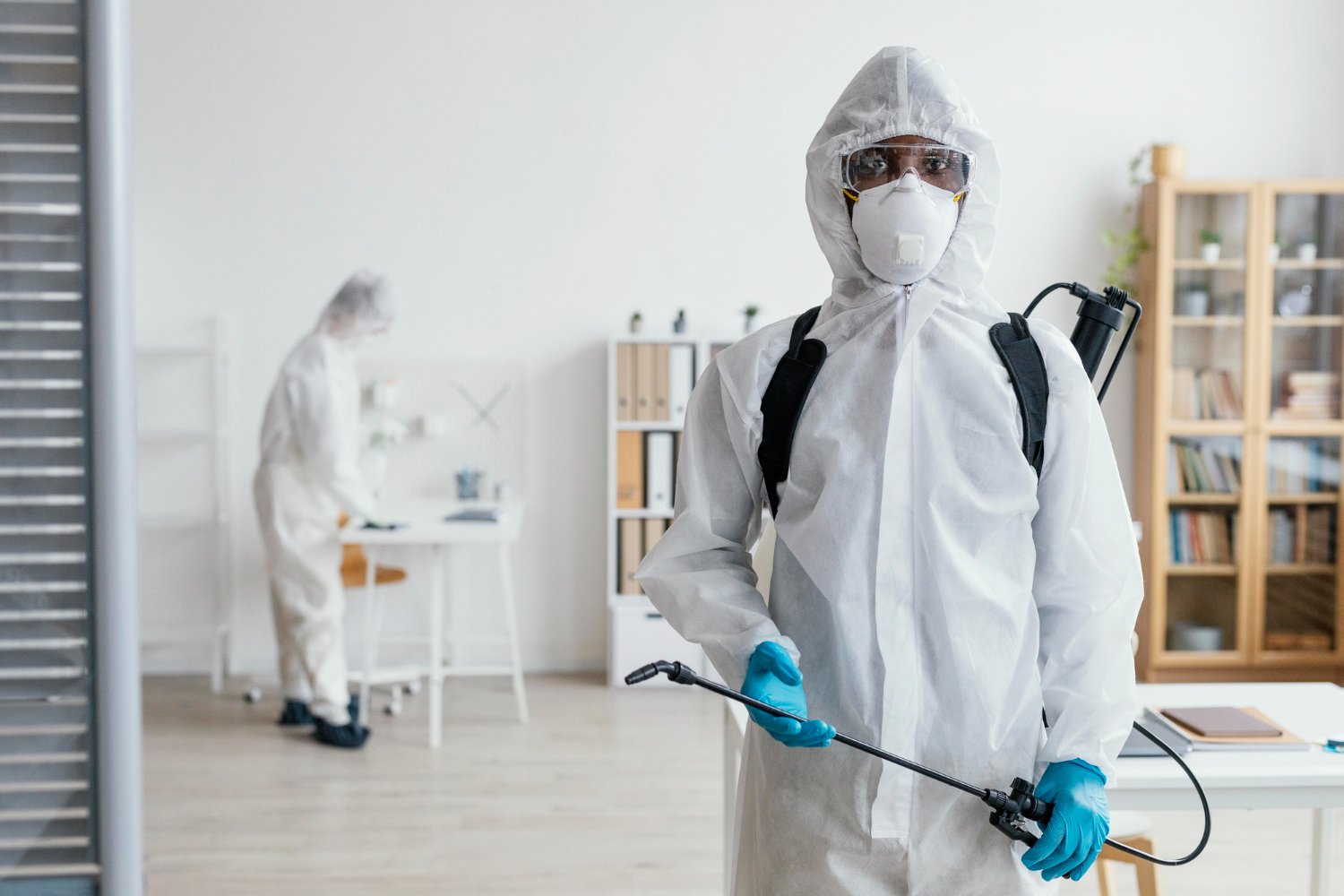A1 Charlotte Pest Control Companies - Your Regional Pest Professionals
A1 Charlotte Pest Control Companies - Your Regional Pest Professionals
Blog Article
Bed Pest Therapy Failure: Contrasting Chemical Vs. Non-Chemical Solutions
In the world of bug control, specifically when dealing with the persistent concern of bed insects, the choice in between chemical and non-chemical treatment solutions can be a critical one. Both strategies supply distinctive benefits and downsides, influencing factors such as efficiency, safety and security considerations, and general expense. By examining the nuanced information of each technique, a clearer understanding of which path to seek in addressing a bed bug invasion can be attained.
Performance of Chemical Treatments
Chemical treatments for bed bug infestations have actually been widely recognized for their fast and potent effectiveness in eradicating these pests. When thinking about the effectiveness of chemical therapies, it is crucial to understand that they can offer a quick and detailed solution to a bed insect problem. Professional exterminators usually depend on pesticides to target bed bugs at numerous phases of their life cycle, consisting of nymphs, adults, and eggs. These chemicals usually work by interrupting the bed pests' nerve system, leading to paralysis and eventual fatality.
In addition, chemical treatments have the advantage of supplying residual results, suggesting that they can proceed to get rid of bed bugs also after the first application. This recurring action is particularly helpful in combating any prospective re-infestations. In addition, the quick action of chemical treatments can bring relief to individuals facing serious bed bug invasions, permitting them to reclaim control of their living areas promptly.
Security Problems With Chemical Solutions
One important element that needs mindful consideration when utilizing chemical solutions for bed bug treatment is making sure the safety and security of occupants and the environment. Direct exposure to particular chemicals made use of in bed pest therapies can lead to respiratory system concerns, skin irritability, or various other unfavorable responses, specifically in people with pre-existing problems or sensitivities.
Additionally, the ecological influence of chemical services is an additional substantial consideration. Some chemicals utilized in bed bug therapies may be harmful to beneficial insects, wildlife, and ecological communities if they leach into the dirt or water supply. It is important to use chemical treatments deliberately, complying with security guidelines, and taking into consideration much less harmful alternatives to reduce these dangers and ensure the secure and effective monitoring of bed insect infestations.
Advantages of Non-Chemical Methods
Taking into consideration the possible safety worries and ecological influence linked with chemical solutions for bed pest treatment, exploring non-chemical methods provides an encouraging choice with several distinct benefits. Non-chemical treatments are ecologically friendly, as they do not contribute to air or water contamination, making them a sustainable option for insect control.
Additionally, non-chemical services can be effective in targeting bed insects, including hard-to-reach locations where chemical therapies might not permeate. Approaches such as heat treatment, vacuuming, steam cleaning, and mattress encasements offer detailed eradication without making use of unsafe chemicals. Furthermore, non-chemical techniques can be less disruptive, calling for very little preparation and enabling quicker reentry into treated areas. Generally, going with non-chemical bed pest treatment methods not just prioritizes safety and ecological security but additionally makes sure effective and comprehensive pest control.
Limitations of Non-Chemical Treatments

Furthermore, non-chemical treatments frequently require numerous A1 charlotte bed bug exterminator applications to accomplish successful eradication. This can be time-consuming and might not always assure total elimination of all bed bugs and their eggs, especially in hidden or hard-to-reach areas.
Moreover, the success of non-chemical treatments greatly relies upon correct application and thoroughness, which can be challenging for people without specialist competence. Inadequate application of non-chemical techniques may lead to insufficient obliteration, bring about consistent infestations and the requirement for additional treatments.
Consequently, while non-chemical therapies have their benefits, it is necessary to recognize these restrictions and consider them when identifying the most reliable approach for handling bed bug invasions.
Expense Contrast: Chemical Vs. Non-Chemical Options
Provided the constraints connected with non-chemical treatments, an important element to evaluate in the context of bed bug administration is the price contrast between chemical and non-chemical options. Chemical therapies generally include the application of pesticides by specialists, which can vary from $250 to $900 per space, relying on the severity of the invasion and the dimension of the location to be dealt with. On the other hand, non-chemical treatments like warm therapy or vapor can be more expensive, with costs ranging from $1,000 to $6,000 for a whole home. While the first expense of chemical treatments might appear reduced, multiple treatments may be needed to totally eliminate the invasion, potentially boosting the general expense. On the various other hand, non-chemical options might give an extra lasting and environmentally friendly remedy, although they can be cost-prohibitive for some people. Inevitably, when taking into consideration the price of bed pest therapy alternatives, it is vital to consider the ahead of time expenditures versus the effectiveness and long-term sustainability of the selected approach.
Final Thought

Taking into consideration the prospective security concerns and environmental influence associated with chemical solutions for bed pest therapy, exploring non-chemical approaches presents a promising alternative with several distinct advantages.Provided the constraints connected with non-chemical treatments, an essential facet to review in the context of bed bug administration is the expense comparison in between chemical and non-chemical choices. In comparison, non-chemical treatments like warmth treatment or steam can be a lot more expensive, with expenses varying from $1,000 to $6,000 for an entire home. While the preliminary expense of chemical treatments might seem reduced, multiple therapies might be called for to totally remove the infestation, potentially raising the overall price.In final thought, when contrasting chemical and non-chemical bed bug therapy options, it is important to take into consideration efficiency, safety, advantages, limitations, and expense.
Report this page